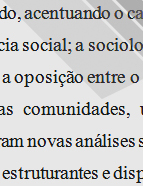

................................
Little else can be said about institutional historiography until the end of the First Republic, apart from Borges Grainha (1862/1925), Histoire de la Franc-Maçonnerie en Portugal (1733-1912), Lisbon, A Editora, 1913, and the work of Esteves Pereira and Guilherme Rodrigues, Portugal. Dicionário Histórico, Corográfico, Heráldico, Biográfico, Bibliográfico, Numismático e Artístico, illustrated (7 vols 1904-1915). From the military dictatorship onwards, and especially during the Estado Novo, many historians published works on institutional themes, which forces us, in the interests of brevity, to choose the most representative ones.
Marcelo Caetano (1906-1981), who succeeded Oliveira Salazar (1969) as head of government, was, as professor of public law at the FDUL, the first to cultivate administrative history in A Codificação Administrativa em Portugal (Um Século de Experiência, 1836-1935) (Administrative Codification in Portugal (A Century of Experience, 1836-1935)), 1935. He begins with the decree of 31 December 1836 by Manuel da Silva Passos (Código Administrativo), discusses the French system that influenced Mouzinho da Silveira and comments on other codes. He also wrote an extensive work on Os antecedentes da Reforma Administrativa de 1832 (Mouzinho da Silveira), 1967. He debates the question of the periodisation of the history of law, thus launching the theorisation of the mode of production of the legislative process and the definition of the phases of consolidation that he called the ‘identity of the nation’. His Manual de Direito Administrativo (Manual of Administrative Law, 1937), used in teaching, has been reprinted several times. Other topics he explored were municipalities, colonies, the Cortes and the constitutional regime. He practised bibliographic review in an innovative way, an example of which is his critique of Três Livros sobre História da Administração Pública (Three Books on the History of Public Administration), a separate publication from the FD journal of the University of Lisbon, vol. IX, 1954, pp. 5-29). The first, by Virgínia Rau (A Casa dos Contos), reviews royal accounting during the first dynasty, the Regimento e as Ordenações da Fazenda (1516), the role played by the vedores da fazenda, the creation of the Conselho da Fazenda (Council of the Treasury) and the Conselho d (Council of the Treasury and Finance) (1591) and the juntas dos contos (accounting boards) (1604). The second book is about the 150th anniversary of the creation of the State Secretariat for Finance (Exposição histórica do Ministério das Finanças – Notícia histórica dos Serviços) and the third, by Francisco Paulo Mendes da Luz (O Conselho da Índia), is the first doctoral thesis in Historical Sciences at the University of Coimbra. The work covers the period from the Secretary of Dispatches and Affairs of India (1530) to the creation of the council. This was a subject of interest to Marcelo Caetano himself, who had studied the Overseas Council at various times, in Notes for a Memoir on the Overseas Council, 1938; From the Overseas Council to the Council of the Empire, 1943; The Overseas Council: An Outline of its History, 1967; and, to a certain extent, also in “The Pombaline and post-Pombaline reforms concerning the overseas territories. The new spirit in which they are conceived”, History of Portuguese Expansion in the World). His summary work on The Government and Central Administration after the Restoration, in the same History of Expansion (1940), shows great rigour and systematisation, and has been widely used throughout historiography.
This work is financed by national funds through FCT - Foundation for Science and Technology, I.P, in the scope of the projects UIDB/04311/2020 and UIDP/04311/2020.
